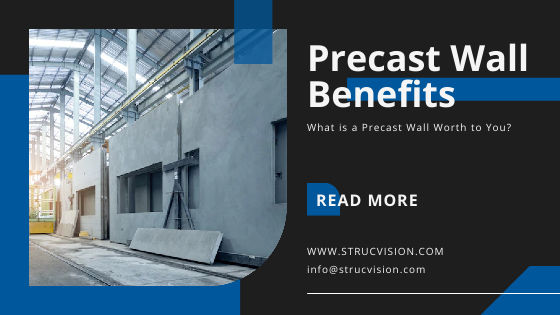The Future of Precast Modeling: How Technology is Changing the Industry
- Struc Vision
- Mar 9, 2023
- 2 min read
Introduction
The construction industry has been rapidly evolving with technological advancements, and precast modeling is no exception. Precast modeling is an essential process in the construction industry that involves creating 3D models of precast elements such as beams, columns, and panels before they are fabricated and installed on-site. In this blog, we will explore the importance of precast modeling, the challenges faced by precast modelers, and how technology is revolutionizing the industry.
Overview of Precast Modeling
Precast modeling is a process that involves creating detailed 3D models of precast elements using specialized software. These models are used to identify design errors and clashes, plan for transportation and installation, and provide accurate fabrication details. Precast modeling allows for accurate fabrication and installation of precast elements, reducing errors and the need for rework.
Current Challenges in Precast Modeling
Despite the benefits of precast modeling, there are still challenges that need to be addressed. One of the primary challenges is the accuracy of the models, as the models must match the actual precast elements. Additionally, the communication between stakeholders, such as designers, fabricators, and installers, can be challenging, leading to errors and delays.
Technological Advances in Precast Modeling
Recent technological advancements are changing the way precast models are created and improving their accuracy, efficiency, and communication. For example, 3D modeling software, such as Tekla Structures and Autodesk Revit, allows for the creation of accurate and detailed precast models. Automation and artificial intelligence (AI) are also being used to streamline the precast modeling process, allowing for faster and more efficient creation of models.
Benefits of Technological Advances in Precast Modeling
The benefits of using technology in precast modeling are numerous. With more accurate models, errors are reduced, and the need for rework is minimized. Efficient communication between stakeholders reduces the likelihood of miscommunication and delays. Additionally, the use of automation and AI can reduce labor costs and speed up the precast modeling process.
Future Trends in Precast Modeling
The future of precast modeling looks promising, with the increased use of automation and AI. These technologies will continue to improve accuracy and efficiency while reducing labor costs. Additionally, prefabrication is becoming more popular, leading to an increased demand for precast modeling. Advancements in building information modeling (BIM) and cloud-based collaboration platforms are also expected to further streamline the precast modeling process.
Conclusion
In conclusion, precast modeling is an essential process in the construction industry, and technology is transforming the way it is done. Advancements in 3D modeling software, automation, and AI are improving the accuracy, efficiency, and communication of precast models. This, in turn, is reducing errors, minimizes the need for rework, and improves the construction industry as a whole. As technology continues to advance, we can expect the future of precast modeling to be even more efficient and effective.



I'm anticipating that precast detailing services are the topic of your blog. It will have a positive impact on the BIM Engineering sector. To learn more about equivalent Precast Detailing, Click Here: https://www.siliconec.com.au/rebar-detailing/pre-cast-detailing.html Looking forward to your upcoming blog.